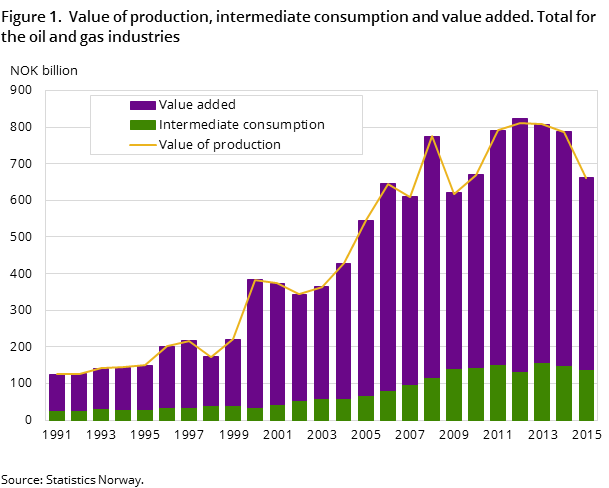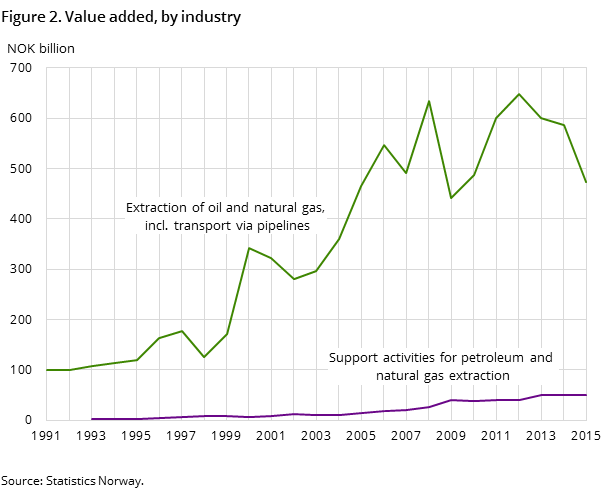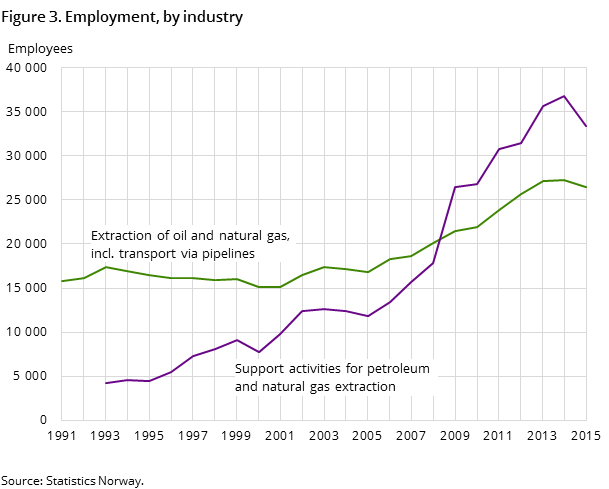Low oil prices caused fall in production value
Published:
Lower prices for crude oil and natural gas contributed to a fall in production value of NOK 126 billion in 2015 for the extraction and related services. This is a significant decrease of 16 per cent in comparison with 2014.
- Full set of figures
- Extraction and related services
- Series archive
- Extraction and related services (archive)
Production value for the extraction and related services amounted to NOK 525 billion and NOK 137 billion respectively in 2015; an overall decrease of 16 per cent compared with 2014. The price drop was significant, however, the production of crude oil and natural gas (measured in Sm3) increased by 4 and 7 per cent respectively from the previous year.
Price drop had most impact on the extraction industry
The extraction industry had a significant decrease in production value by 19 per cent in 2015. At the same time, the investment dropped by 10 per cent. Both were related to and caused by the oil and gas price drop.
Intermediate consumption decreased by NOK 10 billion for the extraction industry, from NOK 62 billion in 2014 to NOK 52 billion in 2015. A decline in intermediate consumption can largely be explained by the transition to a new survey form (see more about Transition to new survey form in Appendix Box below). Adjusting the effect of the survey transition, the intermediate consumption for the extraction industry in 2015 was approximately at the same level as in 2014.
Value added in the extraction industry decreased by 19 per cent in 2015, mostly caused by the decline in production value.
Slight decrease overall for the extraction-related service industry
The extraction-related service industry was affected far less by the price drop overall. The industry had only a slight reduction in production value by 0.8 per cent, and a 0.4 per cent decrease in intermediate consumption. Although the extraction service industry overall in 2015 remained at the same level as in 2014, there were large disparities between companies within the industry.
Significant decrease in employment in the extraction-related service industry
In 2015, there were 33 399 employees in the extraction-related service industry, a decrease of 9 per cent compared to 2014. Wage costs decreased by 7 per cent, which is slightly less than the reduction in employment. There were 26 470 employees in the extraction industry, 3 per cent fewer than in 2014. Wage costs increased slightly by 1 per cent. The ratio between wage and employee, measured by wages per employee, has also grown in 2015.
Contact
-
Yun Walther-Zhang
-
Trine Heill Braathu Randen
-
Håkon Frøysa Skullerud
-
Statistics Norway's Information Centre



